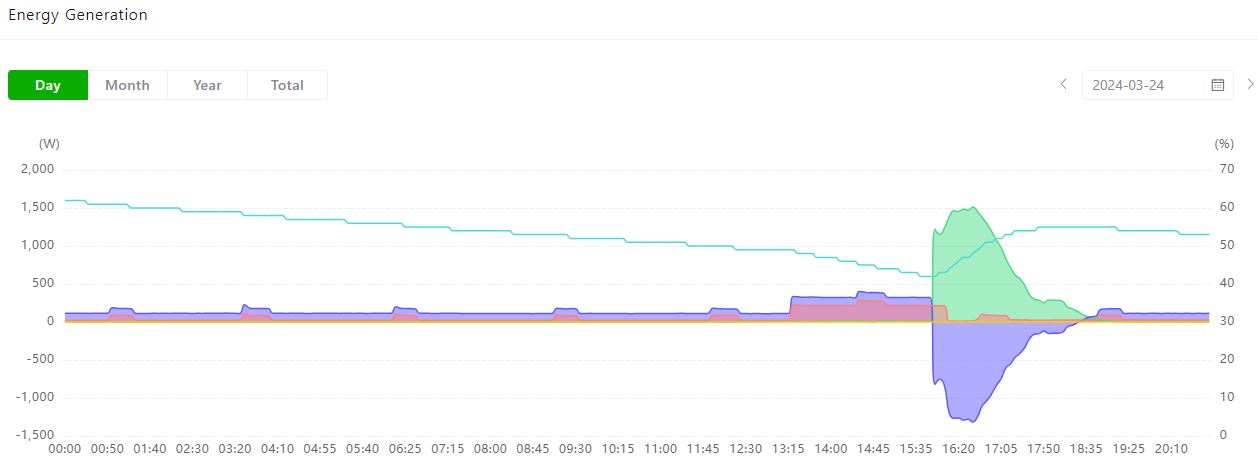|
|
|
evidence of an avalanche
Sunday, March 24 2024
It had been very rainy here yesterday, though I knew up in Gloversville and even more so at the cabin in the nearby Adirondacks this precipitation had taken the form of snow, and probably a lot of it. So last evening before bed, I checked one of the websites that provides a map of snow depths (most of which are hard to read, have terrible and/or ambiguous color-coding, or cannot be scaled) and learned that twelve inches of snow now lay on the ground in a narrow band running just north of Gloversville that included our cabin. On either side of this band, the snow depths were more like eight inches (which is also impressive, but less of a headache to deal with). With 12 inches of snow on the solar panels, the cabin's battery would not be charged and would be depleted of usable power in a couple days. This meant that if I wanted to do any more heating of the cabin using my remote-control system, I would have to do it while there was still battery power and hope that any heating I did this way would be enough to keep the cabin's upstairs above freezing until either warmer weather arrived or I was able to drive up there and do things like clear the solar panels, run the generator, and burn wood in the woodstove. This reality hung over me most of the day, though there was no ongoing emergency. The sun had come out, and I could see from the cabin's data that this was passively raising the indoor temperature up to nearly 50 degrees Fahrenheit. So I could enjoy the usual Sunday morning routine in the living room, now (for the first time in awhile) without an extension ladder rising from the middle of the floor.
As for the new ceiling fan, I realized it had functionality that would work a little like the thermostat-control I'd hacked onto the old ceiling fan. It had some buttons that could be pushed after turning on the fan that would automatically shut it off in a certain amount of time. There was a button to do so in one hour, another to do it in four hours, and one to do it in eight hours. Since I have to manually kindle up a fire anyway, I can also turn on the fan manually and push one of those buttons. It's stuff I have to remember to do, but if I get in the habit of doing it, it will have nearly the same effect as a fan turning on once the temperature gets to a certain level.
Later this afternoon I thought it prudent to remotely run the cabin's heater for a few hours to give it little more heat to work with should it run out of power in the next couple days. At around 4:00pm as I was tinkering with the server-side code for my cabin remote control software, I happened to check the PowerView page, the one that gives near-real-time stats from the cabin's solar inverter. Suddenly the panels had gone from generating a meagre six to twelve watts (about what you can expect when a foot of snow is on the panels) to 1200 watts. This could only mean one thing: a bunch of snow on the panels had suddenly slid off in what must've been a spectacular avalanche. Mind you, the outdoor temperatures at the time were right about freezing, so perhaps a sudden appearance of slick meltwater had done the trick. This meant that I would likely have as much power as I needed to run the boiler remotely for the next couple of days (which were predicted to be sunny). After that, the forecast was calling for conditions so mild that the cabin would not be in any danger of freezing even if I did nothing. So I turned off the remote heating, only a little disappointed that I wouldn't have to run back to the cabin to deal with any emergencies. (Let's not kid ourselves; shoveling out a space off Woodworth Lake Road and trudging through 12 inches of snow to get to the cabin was not going to be much fun, even if it did give me a chance to upgrade my NodeMCUs with the much better version of the firmware I've been developing in Hurley.)
I should mention that among several software breakthroughs I made today was an important one regarding the reliability of a NodeMCU reading data from the server it is polling. As I mentioned, the reading of such data was a particularly infrequent event when connection speeds were fast. But they also seemed to happen increasingly infrequently even over the slower connection speeds of the cabin the longer the NodeMCU was up. Today, on a whim, I tried inserting a delay between the WiFiClient.connect() and the while(WiFiClient.available()). I found that any delay at all (even one millisecond) was enough to cause the NodeMCU to successfully retrieve server data every time. I'll have to explore this issue further. But even before I do so, one of the biggest irritations of my remote control system (unreliability) seems to have been fixed. Had I fixed this before leaving the cabin on Thurday, I wouldn't have been so anxious waiting around for my remote-control commands to manifest in the cabin data, since they would've happened within a couple minutes instead of within an hour or more.

On this graph you can see a sudden appearance of solar power generation starting at around 4:00pm. This is evidence of a sudden loss of snow from the solar panels.
That regular pattern of purplish rectangular blips is the power consumption from the refrigerator. That larger monolithic purple block is power consumption from the boiler after I remotely turned it on.
Click to enlarge.
For linking purposes this article's URL is:
http://asecular.com/blog.php?240324 feedback
previous | next |
